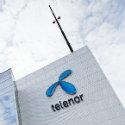Telenor takes step closer to zero-humans business
The Norwegian operator has already shed thousands of employees and more are set to go under plans announced today.

Zero touch, a phrase much in vogue two or three years ago, has become less fashionable lately. As a euphemism for "no employees," it always lacked subtlety. In its latest investor presentation, Telenor prefers "touch-free," which is hardly an improvement and sounds like an answer to hygiene problems. But elsewhere the Norwegian operator's honesty about job cuts makes you wonder why it bothers: Around 15% of jobs will go by 2022, it confesses. Some 3,000 workers will join the ranks of the unemployed.
Telenor's employees must be among the most terrified in the telecom business. Back in 2015, the operator – whose Asian empire then included a sizeable Indian business – had a workforce of about 38,000 employees. After a disposal in India, other divestments and "organic reductions," it was left with around 20,000 last year, according to the presentation it prepared for this week's capital markets day. By the end of 2022, notwithstanding a recruitment drive in digital or growth areas, Telenor could be down to just 17,000 members of staff.
The plans are a harbinger of what could lie in wait for workers throughout the sector. Telenor believes it can hack into its headcount without upsetting business performance. Indeed, the operator is targeting revenue growth of 2% over the timeframe of the cuts, and in the worst-case scenario it expects sales to remain stable. Layoffs will save it around 1 billion Norwegian kroner ($110 million) annually, it reckons – about 3% of total operating costs. After selling real estate and sharing networks, it aims to become a more profitable business.
Figure 1: Last man standing?  Telenor CEO Sigve Brekke has more reason to smile than many of his employees.
Telenor CEO Sigve Brekke has more reason to smile than many of his employees.
Running a major telecom business with fewer employees is getting easier thanks to recent technological advances. Sitting alongside the newer networks are various old-fashioned platforms that Telenor will soon be able to switch off. The decommissioning of copper lines is a priority as fiber and high-speed mobile networks become pervasive. Automation is also key, says Telenor. At its Myanmar subsidiary, it already claims to be 79% "touch-free" following investments in artificial intelligence and more sophisticated IT systems (although how this 79% is measured is unclear). By 2023, it wants to have "fully automated and predictive customer-centric operations" across its entire global operation.
While none of these technologies and tools are off-limits to other service providers, Telenor is already one of Europe's most efficient players based on employee numbers. Last year it made roughly $600,000 in sales per employee (a more precise figure is unavailable without more specific employee data than Telenor has recently provided), up from just $365,000 in 2015. Although exiting India must have buoyed that figure, Germany's Deutsche Telekom makes little more than $400,000 in per-employee revenues, and France's Orange generates about $300,000 (with, it should be noted, substantial interests in low-income African markets).
Other costs ate into Telenor's profits last year, but its margin for earnings (before interest, tax, depreciation and amortization) was still a respectable 40%. After adjusting for special factors, Deutsche Telekom's was about 36%.
For all the latest news from the wireless networking and services sector, check out our dedicated mobile content channel here on Light Reading.
Investors cheered today's presentation, sending Telenor's share price up more than 4% in Oslo, where it closed at NOK157.15 ($17.04). But the stock has performed relatively poorly in the past year and is down from a high point of NOK189.05 ($20.50) last June. Unfortunately, there is not much to make investors feel genuinely excited. "Despite strong industry fundamentals, growth is limited," says Telenor. Ballyhooed by other telcos, 5G is "an evolution rather than a revolution," it adds. Even here, one of the main attractions seems to be greater efficiency: The cost per gigabyte halved to just NOK4 ($0.43) between 2017 and 2019, and Telenor expects a further reduction to NOK3 ($0.33) this year as 5G is gradually extended.
For those planning a future in telecom, it is not all bad news. Telenor says it will train 1,200 experts in "critical competencies" each year (until when it does not say), as it turns other functions into a touch-free zone. And there will always be a need for the company bosses.
Related posts:
— Iain Morris, International Editor, Light Reading
About the Author(s)
You May Also Like












